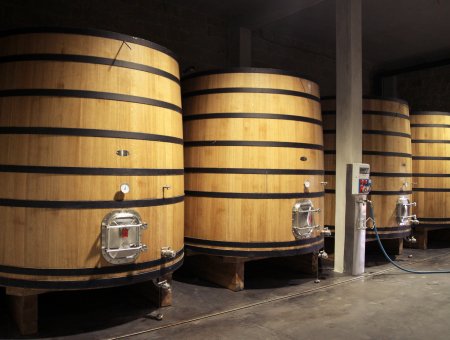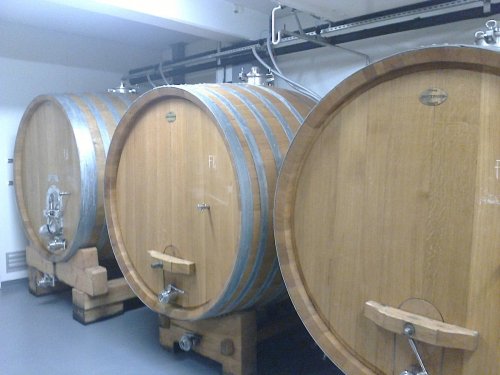Wooden tank
Wooden vats are noble containers that bring specific aromas to the wine and allow gentle oxidation thanks to their porosity. However, their delicate maintenance can encourage microbiological contamination or the appearance of bad tastes. What's more, wooden vats are poor conductors of heat, complicating thermal management during vinification.

Wooden tank: a noble, traditional container
Wood, the historic material of winemaking, continues to seduce with its unique qualities. Although it has largely been replaced by stainless steel and concrete in modern vats, it is still highly prized for making exceptional wines and for ageing, particularly in certain regions such as Bordeaux.A choice of shapes and capacities
Wooden vats come in many shapes and sizes:- Barrels: Truncated cone-shaped, they are designed for volumes ranging from 10 to over 2000 hL. Barrels can be used with or without a ceiling, making them suitable for different styles of winemaking, particularly macerations.
- Tuns: Cylindrical in shape, they resemble oversized barrels and can hold from ten to several hundred hectolitres. Tuns are particularly popular for long maturation, allowing subtle refinement of aromas and tannins.

The advantages of wood in winemaking
- Aromatic contribution: The main types of oak used (pedunculate, sessile, etc.) give the wine woody, vanilla or spicy notes, depending on the origin of the wood, its toasting and its age.
- Micro-oxygenation: Thanks to its porosity, wood allows slow, controlled oxidation, which softens the tannins and adds complexity to the wines.
- Aesthetics and tradition: Wooden vats bring a special cachet to the winery, underlining the commitment to traditional, artisanal methods.
Constraints associated with wooden vats
- Delicate maintenance: The porous surfaces of wood require meticulous cleaning to avoid microbiological contamination or bad tastes. Regular monitoring is essential to maintain the hygiene and quality of the wine.
- Low thermal conductivity : Wood is a poor conductor of heat, making temperature control more complex, especially during fermentation.
- Conditional durability: Properly maintained, wooden vats can last for several decades, but they remain more sensitive to wear and tear and to variations in climatic conditions than modern containers.
Modern applications for wooden tanks
Today, wooden vats are mainly used for :- Long macerations, particularly for top-of-the-range red wines.
- Wine ageing, where they help develop complex aromas and improve texture.
- Fermentation of whites and reds, particularly for vintages requiring a specific aromatic contribution.
In short, wooden vats, although more demanding in terms of maintenance and management, remain a preferred choice for winemakers looking to produce exceptional wines with a unique aromatic signature and a respect for ancestral traditions.
